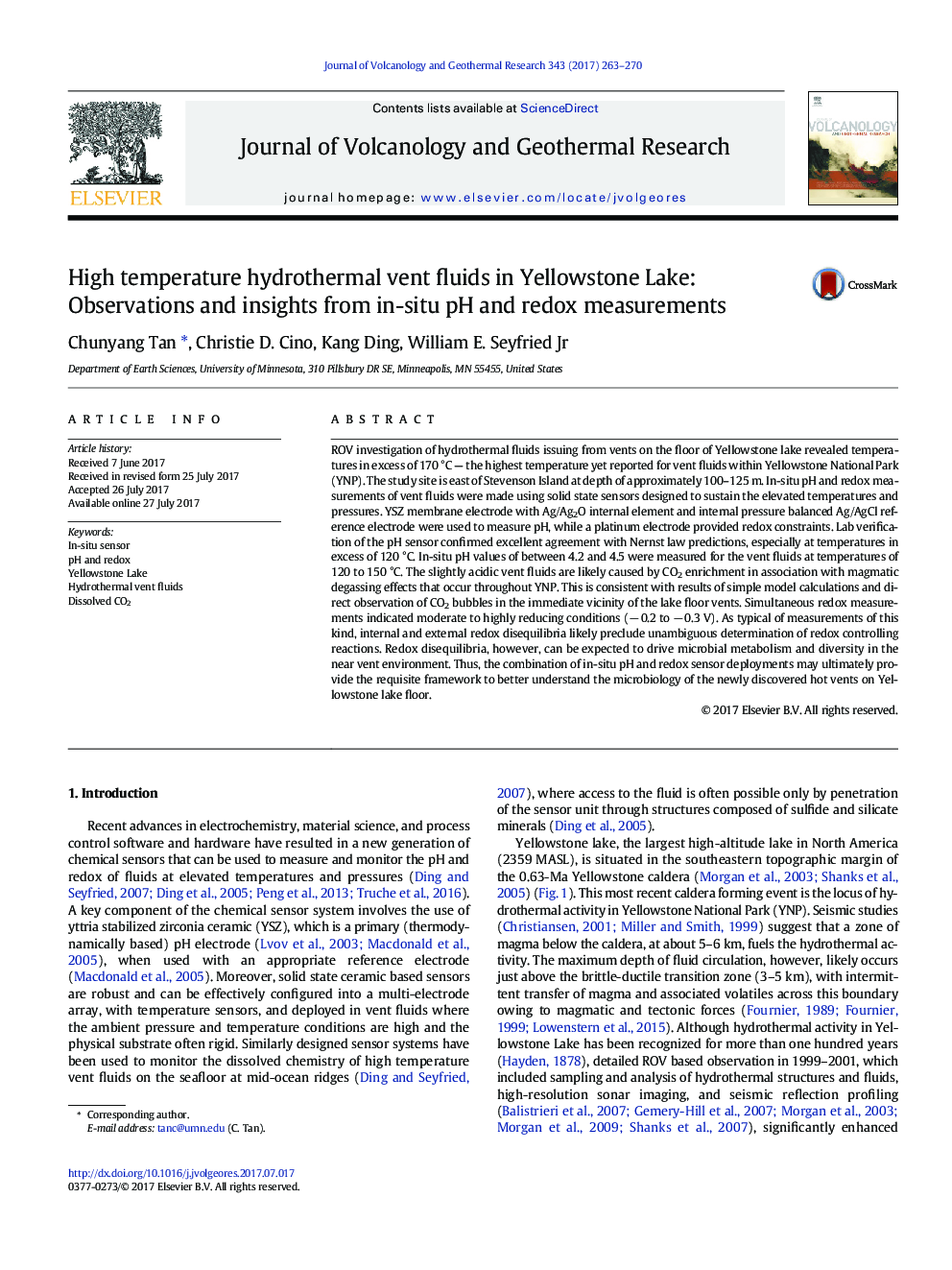| Article ID | Journal | Published Year | Pages | File Type |
|---|---|---|---|---|
| 5783702 | Journal of Volcanology and Geothermal Research | 2017 | 8 Pages |
Highlightâ¢Vent fluid temperatures in excess of 170 °C (the hottest vent fluid temperature measured in Yellowstone National Park) were documented, close to boiling at 121 meters, the water depth at which the vents were discovered.â¢Magmatically derived CO2 renders the vent fluids moderately acidic, with pH values from 4.25 to 4.5.â¢Decidedly low Eh values indicate distinctly reducing conditions.â¢The combination of in-situ chemical and physical data provide the requisite framework to better understand the geochemistry and microbiology of the hot vents on Yellowstone lake floor, broadening the implications of the research.
ROV investigation of hydrothermal fluids issuing from vents on the floor of Yellowstone lake revealed temperatures in excess of 170 °C - the highest temperature yet reported for vent fluids within Yellowstone National Park (YNP). The study site is east of Stevenson Island at depth of approximately 100-125 m. In-situ pH and redox measurements of vent fluids were made using solid state sensors designed to sustain the elevated temperatures and pressures. YSZ membrane electrode with Ag/Ag2O internal element and internal pressure balanced Ag/AgCl reference electrode were used to measure pH, while a platinum electrode provided redox constraints. Lab verification of the pH sensor confirmed excellent agreement with Nernst law predictions, especially at temperatures in excess of 120 °C. In-situ pH values of between 4.2 and 4.5 were measured for the vent fluids at temperatures of 120 to 150 °C. The slightly acidic vent fluids are likely caused by CO2 enrichment in association with magmatic degassing effects that occur throughout YNP. This is consistent with results of simple model calculations and direct observation of CO2 bubbles in the immediate vicinity of the lake floor vents. Simultaneous redox measurements indicated moderate to highly reducing conditions (â 0.2 to â 0.3 V). As typical of measurements of this kind, internal and external redox disequilibria likely preclude unambiguous determination of redox controlling reactions. Redox disequilibria, however, can be expected to drive microbial metabolism and diversity in the near vent environment. Thus, the combination of in-situ pH and redox sensor deployments may ultimately provide the requisite framework to better understand the microbiology of the newly discovered hot vents on Yellowstone lake floor.
